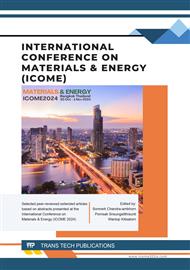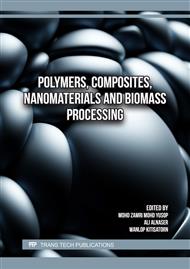p.3
p.11
p.17
p.27
p.37
p.45
p.55
p.63
Development of Palm Oil-Based Polyol for the Environmentally Sustainable Production of Polyurethane Foam
Abstract:
This study synthesized bio-polyols from epoxidized palm oil (EPO) and polysorbate (Tween20), and developed polyurethane foams using these bio-polyols. FT-IR confirmed the formation of urethane linkages, with increased EPO ratios enhancing urethane content. SEM showed that the PU foams exhibited a spherical open-cell structure, with cell sizes increasing at higher EPO ratios. The compressive modulus decreased with higher EPO ratios at an NCO/OH molar ratio of 0.8, whereas compressive strength increased at an NCO/OH molar ratio of 1.0 due to thicker cell walls and enhanced urethane linkages. Resilience tests showed increased energy absorption with higher EPO ratios, attributed to phase mixing and the presence of free urethane and urea. These findings suggest that EPO-based polyol PU foams could be used in applications such as cushioning, noise reduction, and vibration energy mitigation, primarily in the furniture, bedding, carpet underlay, and transportation industries.
Info:
Periodical:
Pages:
11-16
Citation:
Online since:
December 2024
Authors:
Keywords:
Price:
Сopyright:
© 2024 Trans Tech Publications Ltd. All Rights Reserved
Share:
Citation:



